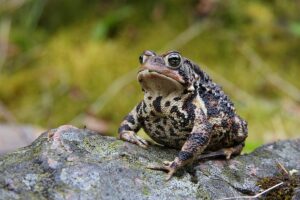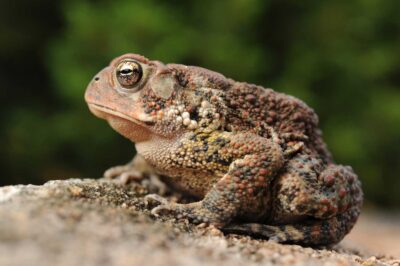When it comes to our amphibian friends, toads often capture our curiosity with their unique behaviors and charming appearances. But how long can a toad live? Understanding a toad’s lifespan not only helps us appreciate their role in the ecosystem but also informs us about the best ways to care for them if we choose to keep them as pets.
Whether you’re a herpetology enthusiast, a concerned pet owner, or just a curious nature lover, exploring the lifespan of toads can offer insights into their life cycle and the factors that influence their longevity. In this article, we’ll dive into the average lifespan of toads, the variables that affect it, and what you can do to ensure these remarkable amphibians live their fullest lives.
Importance of knowing a toad’s lifespan

Understanding a toad’s lifespan is important for a few key reasons. First off, it helps you provide the right care. Different toad species live for different lengths of time, so knowing how long your toad might live can guide you in giving it the best diet, habitat, and medical care.
It also helps you keep an eye on their health. If you know the typical lifespan of your toad, you’re more likely to notice if something seems off and can address any health issues sooner.
Owning a toad means making a long-term commitment, and knowing its lifespan helps you prepare for that. Plus, if you’re into breeding or conservation, understanding their lifespan is crucial for managing those efforts effectively.
Lastly, being aware of how long your toad might live helps you emotionally prepare for the ups and downs of pet ownership, including the eventual end-of-life care.
How long can a toad live?
The lifespan of a toad can vary widely depending on the species and whether it’s in the wild or in captivity. Here’s a general idea:
- Common Species: For common toads like the American toad, you might see a lifespan of about 10-15 years in captivity. In the wild, they often live shorter lives due to predation and other environmental factors.
- Pet Toads: Some pet toads, like the African clawed toad or the Budgett’s toad, can live around 10-20 years if given proper care in captivity.
- Wild Toads: In the wild, many toads have shorter lifespans, often around 5-10 years, due to natural threats and less controlled living conditions.
Overall, proper care can significantly impact how long your toad lives, with many species living longer in a well-maintained captive environment.
Toad Species and Lifespan
Here’s a look at the lifespan of some common toad species:
- American Toad (Anaxyrus americanus)
- Lifespan: 10-15 years in captivity; 5-10 years in the wild.
- Notes: This common toad can live a long life if provided with proper care and a controlled environment.
- Cane Toad (Rhinella marina)
- Lifespan: Up to 10-15 years in the wild, but can live over 20 years in captivity.
- Notes: Cane toads are known for their hardiness and adaptability, which contributes to their relatively long lifespan.
- European Common Toad (Bufo bufo)
- Lifespan: 10-12 years in the wild, but some have been recorded to live up to 40 years in captivity.
- Notes: Their longevity in captivity is remarkable, thanks to controlled conditions and good care.
- Fowler’s Toad (Anaxyrus fowleri)
- Lifespan: Typically 5 years in the wild; up to 10 years in captivity.
- Notes: They are often preyed upon by predators, which limits their lifespan in the wild.
- Oriental Fire-bellied Toad (Bombina orientalis)
- Lifespan: 10-15 years in captivity.
- Notes: This small, colorful toad can live a long life in captivity with proper care and a suitable environment.
- African Clawed Toad (Xenopus laevis)
- Lifespan: Up to 20 years in captivity.
- Notes: This species is commonly kept as a pet, and with the right care, they can live for two decades.
- Southern Toad (Anaxyrus terrestris)
- Lifespan: 5-10 years in the wild; 10-15 years in captivity.
- Notes: Southern toads thrive in captivity, often outliving their wild counterparts.
In general, toads tend to live longer in captivity, where they are protected from predators, diseases, and environmental hazards.
Factors Affecting Toad Lifespan

Several factors can affect the lifespan of a toad, whether in the wild or in captivity. Here’s a breakdown of the most important ones:
- Species: Different toad species naturally have different lifespans. For example, a Cane toad can live over 20 years in captivity, while a Fowler’s toad typically only lives around 5-10 years.
- Environment: A stable, clean, and well-maintained environment can greatly extend a toad’s life. In the wild, environmental hazards like pollution, habitat destruction, and harsh weather can shorten their lifespan. In captivity, a properly set up enclosure with the right temperature, humidity, and space allows toads to thrive.
- Diet and Nutrition: A well-balanced diet of live insects, worms, and other prey ensures that toads get the nutrients they need to stay healthy. Poor diet or malnutrition, both in the wild and captivity, can lead to health problems and a shorter life.
- Predators: In the wild, toads are vulnerable to a range of predators such as birds, snakes, and larger mammals. The presence of predators greatly affects their chances of survival and reduces their overall lifespan.
- Health and Disease: Toads are susceptible to a variety of diseases and parasites. In captivity, regular health checkups and keeping the environment clean can prevent infections and diseases. Wild toads are more exposed to parasites, which can significantly reduce their lifespan.
- Human Impact: Factors like pollution, pesticides, and urban development destroy habitats and introduce toxins into their environment, which can greatly reduce a toad’s lifespan. In captivity, carelessness or lack of knowledge on proper care can also be harmful.
- Stress: High levels of stress, whether from predators, overcrowded environments, or poor handling in captivity, can negatively impact toads and reduce their lifespan. Providing hiding spots and minimizing disturbances in their habitat can help.
- Breeding and Reproductive Stress: Reproduction takes a toll on toads. Females that reproduce frequently might have shorter lifespans due to the physical demands of laying eggs.
By managing these factors, especially in a captive environment, you can significantly increase a toad’s lifespan. In the wild, toads are much more at the mercy of nature, which usually means shorter lives.
Factors That Can Extend a Toad’s Lifespan
If you’re looking to help your toad live a long, healthy life, here are some key factors that can extend its lifespan:
- Proper Enclosure Setup: Providing a safe and well-maintained enclosure is crucial. Toads need a habitat that mimics their natural environment, with the right temperature, humidity, and space. Ensuring there are plenty of hiding spots and clean water will help reduce stress and promote long-term health.
- Balanced Diet: A varied, nutritious diet is essential for toads. Offering a diet of live insects like crickets, mealworms, and earthworms, dusted with vitamin and mineral supplements, helps ensure they get the right nutrients. A proper diet boosts their immune system and overall vitality.
- Clean Water and Hygiene: Toads absorb water through their skin, so it’s important to provide clean, chlorine-free water for soaking and drinking. Regular cleaning of their enclosure, including substrate and water bowls, helps prevent infections and reduces the risk of harmful bacteria or parasites.
- Temperature and Humidity Control: Toads thrive in environments where the temperature and humidity are within specific ranges. Monitoring and maintaining the right levels based on the species is vital. Using heat lamps, humidity gauges, and misting systems can help create the ideal living conditions.
- Regular Veterinary Care: Preventive health checkups with an exotic vet can catch early signs of disease or parasites before they become serious. In captivity, toads may face issues like skin infections or nutritional deficiencies, so regular vet visits are important for maintaining their long-term health.
- Minimizing Stress: Stress can negatively impact a toad’s immune system and shorten its lifespan. Providing a calm environment with minimal handling, limited noise, and avoiding overcrowded living spaces can help reduce stress. Also, creating hiding spaces in their enclosure gives them a sense of security.
- Proper Handling: When handling your toad, make sure your hands are clean and free of any chemicals or oils, as toads absorb substances through their skin. Avoid excessive handling, as this can cause stress and potential health issues over time.
- Avoiding Exposure to Toxins: In both the wild and captivity, toads are sensitive to pollutants, pesticides, and chemicals. If keeping a pet toad, avoid using harmful chemicals in or around their habitat, and ensure their water is always free of contaminants like chlorine.
- Providing UVB Lighting (if applicable): Some toads benefit from UVB lighting, which helps them synthesize vitamin D3. This is necessary for proper calcium absorption, which in turn supports healthy bones and growth. Always check the specific requirements for your toad species.
- Avoiding Reproductive Stress: While breeding is natural, it can take a toll on a female toad. Limiting excessive breeding and providing optimal conditions during this period can prevent reproductive stress, which can affect her overall health and lifespan.
By carefully managing these factors, particularly in a captive setting, you can greatly increase your toad’s chances of living a long, healthy life, sometimes well beyond what they might experience in the wild.

